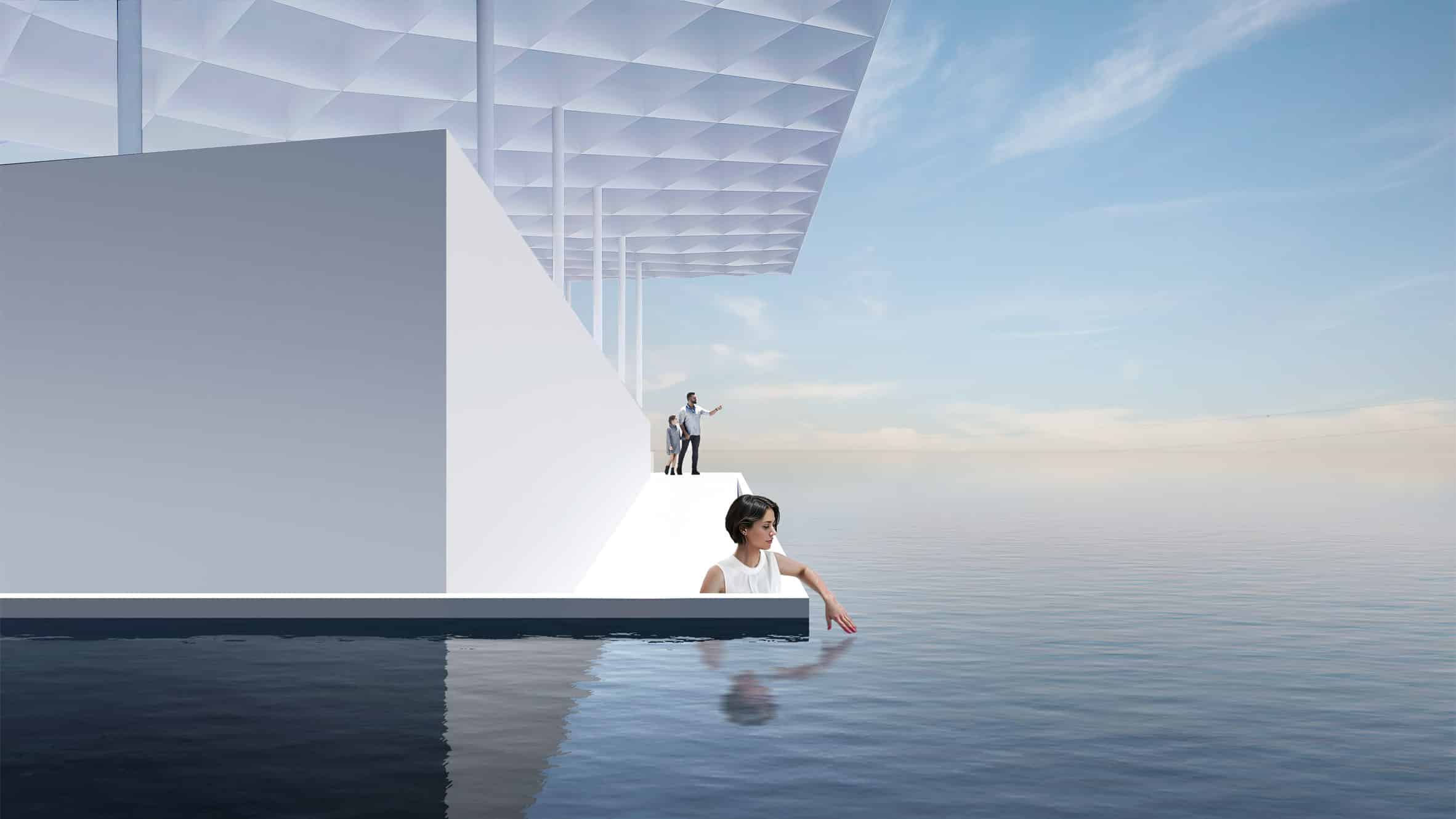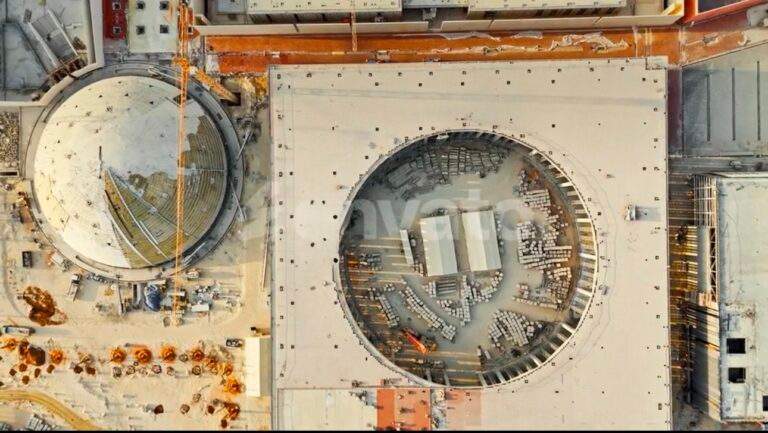Italian firm Carlo Ratti Associati, in collaboration with US-based Höweler + Yoon Architecture, has unveiled AquaPraça, a bold new floating climate plaza set to debut at the Venice Architecture Biennale before finding a permanent home in Belém, Brazil. Blurring the lines between architecture, environment, and civic engagement, the 400-square-metre platform offers a reimagined space for climate dialogue, cultural events, and public interaction.
A New Type of Civic Architecture
AquaPraça is not merely a temporary pavilion. It represents an evolving architectural concept—fluid in function and form—responsive to climate realities. With its floating base and partially submerged core, the project physically and symbolically connects architecture to rising sea levels and the shifting dynamics of global coastal cities.
The structure consists of sloping floors, bringing visitors to various elevations—some that rise above the water for panoramic views, and others that meet it at eye level, offering an immersive experience. Central to the plaza is a rectangular pool cut into the platform, merging the architecture with the aquatic environment. The design allows the platform to adjust water levels naturally, offering both practicality and poetry in its function.
This floating climate plaza will be launched during the Venice Architecture Biennale in September. The project will then travel across the Atlantic to be repurposed as the Italian Pavilion at COP30 in Belém, Brazil. Following the global conference, it will stay in Belém permanently as a public space on Guarajará Bay in the heart of the Amazon.

Architectural Analysis of AquaPraça
From a design standpoint, AquaPraça redefines what a pavilion can be. Unlike traditional structures that resist environmental forces, this project embraces them. Its floating structure directly responds to rising sea levels—an issue particularly relevant to Venice and the Amazon River Delta.
The lightweight canopy, supported by slender vertical columns, offers shelter without obstructing sightlines. This openness reflects the project’s mission of transparency and shared experience. The sloped ground plane introduces topographic variation uncommon in floating architecture, which is typically flat. This allows for spatial hierarchies, gathering areas, and contemplative zones.
The subtle engineering behind the water integration is also notable. By letting the internal water level shift with the external body, AquaPraça avoids the rigid barriers that typically separate human environments from nature. Instead, it dissolves them, both visually and physically.
Its structure serves both public and symbolic functions: a civic plaza, an architectural experiment, and a climate communication platform.
Engaging the Public and the Planet
AquaPraça is designed to host approximately 150 people at a time. Its flexible layout allows it to support workshops, debates, exhibitions, and performances, all centered around architecture and environmental justice. At COP30, it will showcase Italy’s contributions to global climate dialogue.
More than just an event pavilion, the plaza has been conceived with long-term civic use in mind. Once it becomes a permanent fixture in Belém, it will continue to serve as a community gathering space, reinforcing architecture’s potential to remain active and relevant long after high-profile events have passed.
The ability to relocate, adapt, and re-engage in different contexts makes AquaPraça a new kind of architecture: ephemeral in appearance, yet enduring in purpose.

Visual Description of the Design
Renderings of the floating climate plaza show a sleek, futuristic platform with a minimalist structural expression. The grid canopy appears almost weightless above the shifting water levels, while the floor plane subtly dips and rises to sculpt the movement of people across the surface.
The water-filled cutout at the center is its visual and experiential focal point. It’s not merely decorative but an active environmental participant, changing as the tides do. In a world increasingly shaped by climate instability, the architecture’s adaptability offers a sense of responsive calm.
The project is particularly striking in its refusal to elevate itself above nature. By submerging parts of the structure, the architects eliminate hierarchy between built space and natural landscape—both are treated with equal importance.
Human Perspective and Design Philosophy
According to Carlo Ratti, the project offers an “architecture that meets the future,” one that doesn’t fight climate change but engages with it. His design is not defensive but adaptive, inviting people to confront global challenges through lived spatial experience.
Eric Höweler and J Meejin Yoon emphasize the symbolic value of the sloped surfaces, suggesting a “delicate equilibrium” that mirrors the environmental balance we must collectively preserve. Their work prioritizes public interaction and architectural storytelling over grand gestures.
This philosophy is embedded in every line and surface of AquaPraça. It creates a literal and figurative platform for discourse, empathy, and future-oriented action.

Why It Matters
The floating climate plaza challenges existing ideas about civic architecture. It’s transportable, responsive, and environmentally conscious, offering a rare blend of sustainability, design integrity, and public accessibility.
Its presence at two major global events—the Venice Biennale and COP30—underscores architecture’s political power and communicative strength. AquaPraça is not just a place to gather; it is a manifesto built on water.
Final Critical Insight
AquaPraça represents an architectural experiment that dares to merge fragility and permanence. It floats, but it anchors ideas. It shifts, but it defines purpose. In an age when much of public architecture is either overdesigned or environmentally indifferent, AquaPraça shows a middle path—one that is quiet, modest, but fundamentally radical in its intentions.
By resisting the urge to dominate its context, the structure offers a blueprint for a new architectural ethic—one that listens before it builds. And in that restraint lies its true innovation.

For anyone looking for a reliable and up-to-date architectural resource, ArchUp offers fresh content covering projects, design, and competitions.
Photos: Carlo Ratti Associati.
More on ArchUp:







